Learn how to use cyanuric acid safely as a swimming pool stabilizer
The number one thing that keeps people from having a pool (beyond cost) is keeping the chemicals balanced. It’s not an easy task, but with consistent testing and an understanding of how each chemical works with the others, it’s easier to keep them in check.
Cyanuric acid (CYA) is one of the most important pool chemicals. You’ve probably heard it called “pool stabilizer” or “pool conditioner”. It comes in either liquid or granular form, but often is mixed in with chlorine tablets or sticks (also called trichlor) and in chlorine shock (called dichlor).
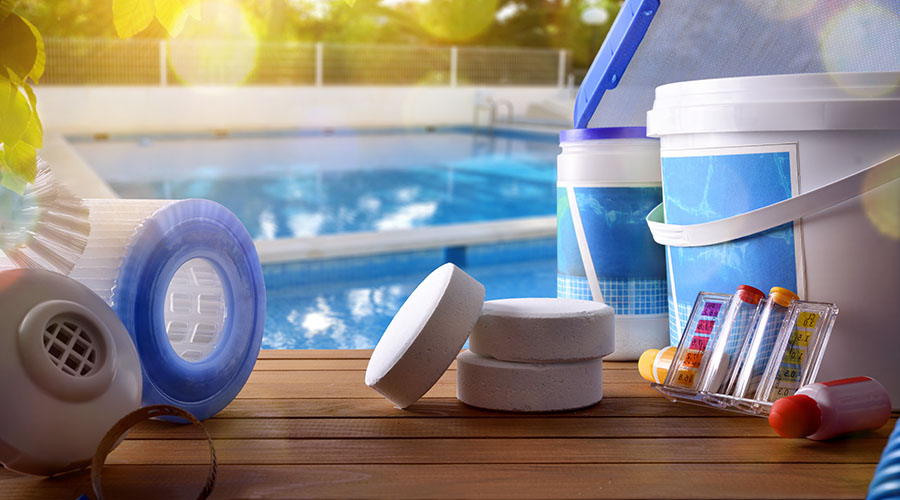
Why is CYA necessary?
It acts to protect the chlorine in your pool from being broken down by sunlight.
How does cyanuric acid work?
The sun’s UV rays break down chlorine at an alarming rate. Within 2 hours, sunlight can actually destroy 75 – 90% of your pool’s chlorine. When in direct sunlight, the half-life of chlorine is a measly 45 minutes (meaning 50% of it is gone within 45 minutes).
As you well know, chlorine is essential to the hygiene of your pool. Without it, you’d be swimming in an E. Coli bath.
No, thank you!
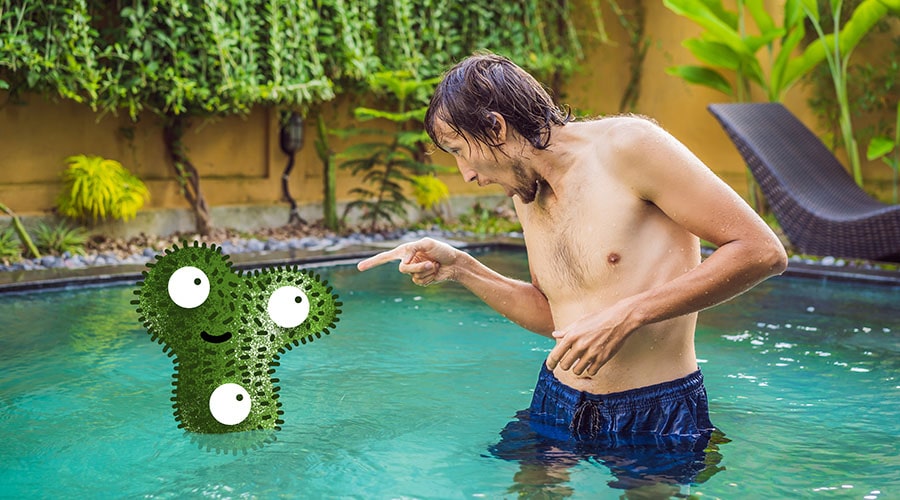
Without getting into too much of the chemistry, cyanuric acid (CYA) works on the molecular level by attaching to 3 chlorine atoms (the free chlorine) through a weak nitrogen-chlorine bond. While the chlorine is attached to the CYA, it’s protected from sunlight. However, the weak nitrogen bond allows the chlorine to let go when it needs to kill bacteria and other pathogens.
Without a stabilizer like cyanuric acid, you’d be having to constantly add chlorine to the pool. In fact, before it was introduced to the pool industry in 1956, that’s what people had to do. Imagine adding up to 8 times more chlorine that what you’re already adding. That’s a lot of money.
We select, test, review and suggest the best products. We may earn a commission, if you buy something through our links.
How much cyanuric acid does your pool need?
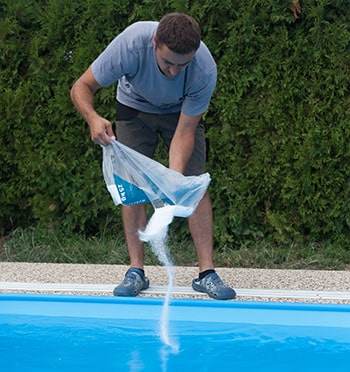
Depending on who you ask, you may get answers from 10 to 100 ppm. Research has shown that levels over 50 ppm don’t provide any additional UV protection for your free chlorine. Also, anything over that amount can significantly slow down chlorine’s ability to kill pathogens.
So, if you can keep your CYA at or below 50 ppm, that should provide plenty of sunscreen protection for your chlorine.
But no matter what the CYA level is, you’ll want to keep testing your free chlorine levels to make sure the pool remains properly sanitized. A good balance is a free chlorine (sanitizer) level that’s 7.5% of your CYA (stabilizer).
For example, if you have a 50 ppm stabilizer level, your sanitizer should be about 3 ppm.
The actual amount you add to the pool will depend on the volume of water and amount of chlorine in your pool. For every 10,000 gallons, you’ll need about 4 pounds of CYA per every 30 ppm it needs to increase.
How often do you add cyanuric acid to a pool?
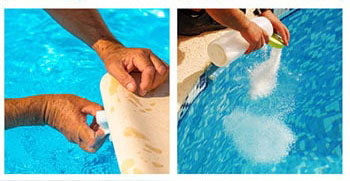
The good (and sometimes bad) thing about CYA is that it doesn’t get used up like other chemicals. Once you put it in, it stays at pretty much the same level unless you have to do a water change or have a big splashout or a lot of evaporation. Any dilution as a result of adding water, even from rain, will lower the CYA concentration.
Most often, the only time you’ll need to add any significant amount of CYA is when you open your pool for the summer. After that, if you use stabilized chlorine each week, you’re adding a little CYA every time. Unless there’s a significant water addition or loss, that’s all the CYA you’ll need to add throughout the year.
How do you add CYA to a pool?
CYA is a pretty strong acid on its own, so the best way to add it is to dissolve it in a bucket of warm water. Then go all around and pour the solution just inside the edges of the pool. For safety’s sake, wear gloves and goggles when you mix it.

The rest of the year, if you use trichlor, you’re adding a combo of chlorine and CYA, so no further addition of straight CYA should be needed. That being said, you need to keep testing your stabilizer levels to make sure it’s not becoming so high that it inhibits the chlorine from doing its job.
There are a couple ways to test the CYA. One is via a complete pool testing kit, in which you can test all the essential pool chemicals. But there are also test kits specifically for CYA alone like this one from Blue Devil.
What if the CYA level is too high?
If you find the CYA level is too high, take a look at the type of chlorine you’re adding. If it’s stabilized chlorine, it contains CYA as well. But they’re all labeled differently so it’s hard to tell sometimes. Look on the ingredient label. If you see one of these chemicals, then you’ll know it has CYA in it:
- trichloroisocyanurate
- sodium dichloroisocyanurate
- potassium dichloroisocyanurate
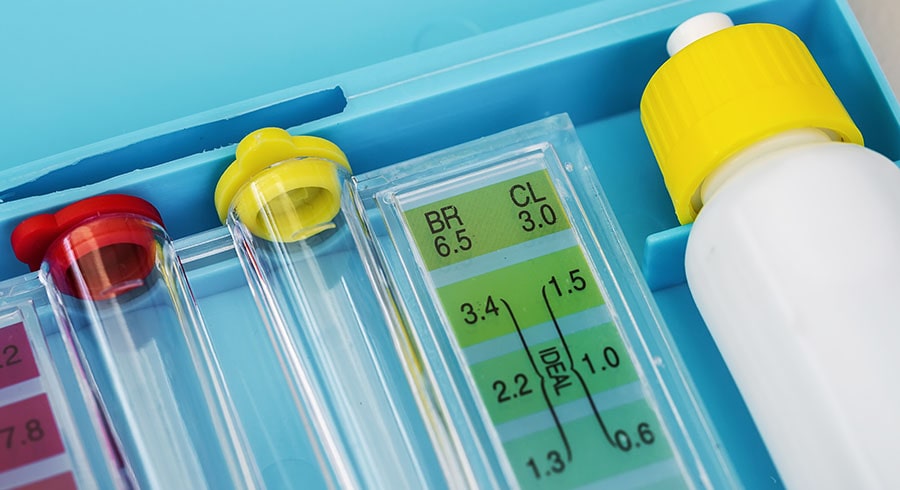
What you’ll need to do now is to switch to a chlorine without CYA to prevent levels from rising. If you make the switch and find CYA is still a bit too high, allow some splashout and evaporation, then top off your pool with fresh water to dilute the CYA levels.
If CYA is very high, you may need to actually drain your pool and refill it. But always test the CYA after a refill before you add any more. This is because CYA can linger in the pool filter system as well as the plaster and calcium scale. And what’s leftover may be as much or even more than you need.
What are some safety precautions when using cyanuric acid?
- Not for indoor pools? – Some experts recommend not using CYA for indoor pools. They caution that it can slow down the effectiveness of chlorine in killing off pathogens. This could pose a problem in busy indoor water parks, where germs can be spread quicker than the chlorine can get to it. So for indoor (or even outdoor) pools with heavy traffic, it might be best to not use CYA.
- Definitely not for hot tubs – For the most part anyway. A little CYA won’t hurt, but if levels are too high, the warm water can become an out-of-control breeding ground for all sorts of nasty things. For that small volume of water, any little change in chemistry can be big. So you’re better off NOT using the combo stabilizer/chlorine. Stick to the pure chemicals, test often, and make sure the free chlorine remains at levels high enough to kill pathogens at all times.
- Cryptosporidium – This microscopic parasite is easily transmitted via water, specifically when someone does a #2 in the pool. Fecal matter can carry a lot of other pathogens too, but crypto is more resistant to chlorine than other pathogens are. It can take up to 12 hours for a 20 ppm chlorine level to kill it. CYA just slows that process down. This is why a lot of public pools use little to no CYA.
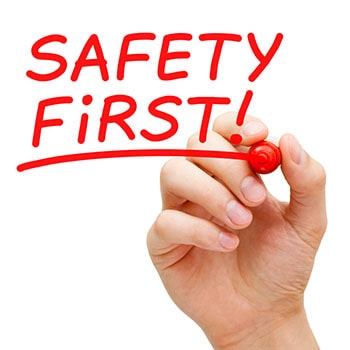
However, other experts disagree, saying that at least a small amount of CYA is good for indoor pools, especially those that may be surrounded by windows that let in a lot of sunlight. It can also tame the degrading effects of chlorine on hair, skin, and swimwear. For those who are sensitive to nitrogen trichloride, CYA reduces the amount that becomes airborne, so it can’t be breathed in. But then again, this could be better for pools that don’t have heavy traffic and therefore have less pathogen load.
If you have young kids or lots of little kid guests in the pool, keep the CYA levels to a minimum. Then when someone drops a little brown log, it’ll be easier to clean up the mess.
Pool Maintenance Tips & Tricks
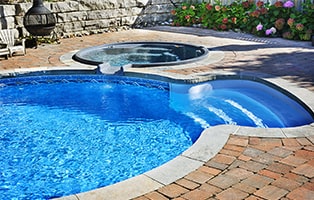

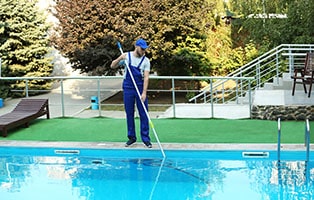
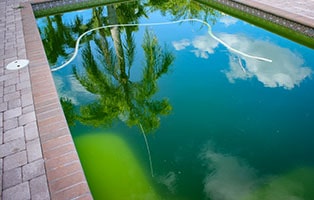
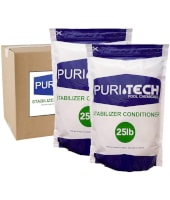

Baking soda will raise the Alkalinity, not the pH. Ash Soda will raise both.
Pool company puts Cyanuric acid granules into skimmer basket and they clog one pvc pipe that is closed off. Skimmer has 2 pvc pipes one to pump and one closed off to main drain…will the granules harm the pvc pipe if it sits in there for a week or so before it slowly breaks down?
I have a 35000 gallon in ground pool. My cy acid continues to run 118-125. It keeps pool light green and cloudy. Keep taking our 2 feet then adding fresh water back. Very little change. How do I refute the cy to 50?
My cyanuric level went from 30 to 100 in one week. Is that possible or a misread? How does that happen?
I mix it in a 5 gallon bucket first
I have an above ground with 5000 gallons. I’m in the high range now, from Max. I’ve been draining daily and adding fresh. I’ve ordered a cya reducer. How much longer should I daily drain? All other chems are good.
Don’t add it unless you’ve tested for it. 10ppm is enough. Anything over 50 and your chlorine binds, no free corrode to sanitize
No free chlorine, not no free corrode
Use the liquid CYA; takes only 30 minutes to completely dissolve
Cyanuric acid barely affects the pH levels of your pool. Also, if you add this to your pool, it has little effect on both alkalinity and hardness of water. I’d suggest that it can be used as a chlorine additive not as standalone product to protect your pool.
I added it to my pool in it just sink to the bottom so I brushed it to the filter and it sucked up into the pipes what do I do?
I added and it didn’t disolve and swept unto bottom and it sucked it through the filter. What should I do?
First—backwash your filter. Second: Vacuum your pool with the vacuum head , hose and pole. Do not backwash for a week. This will put the cyanuric acid granules in your filter. If you have a Pentair Clean and Clear filter with the four cartridges, the CYA will drop to the bottom of the filter and not dissolve. If you have a sand filter, it will work great.
I have a 3000 gal above ground pool and use Pool Time granuals. I’ve had to drain my pool twice for to much. All other chemicals are perfect. Now I’m using a sock in front of the output valve. Started with 1/2 cup now adding 1 cup. How do you know not to over introduce stabilizer requiring pool drainage? Getting ready to winterize. But I’m adding 2-3 cups of chlorine daily with a solar cover on. Frustrating!
Thanks!
I’mmy level is too low I have shocked it 3 times I have poured stabilizer in the skimmer waited 4 days and it’s still low what can I do ?
why does it not dissolve in my pool when added it just sits on the bottom.
Don’t dump it directly in. It takes a long time to dissolve and it’s probably not good to sit on the plaster. I use an old stocking and put in in the skimmer basket. It can take a week or two to read correctly on the tests, so be patient.
I have never added cya to my pool and it’s crystal clear, the 3” tabs I use are stabilized. I shock with 1-2 lbs. of powder shock usually and always have four 3” tabs in a floater in my pool which last over a week chlorine level usually 3ppm when it drops lower I shock as required. Ph I believe is most important and only use arm and hammer baking soda to maintain.
What do you use arm and hammer baking soda for?
Raise the Ph